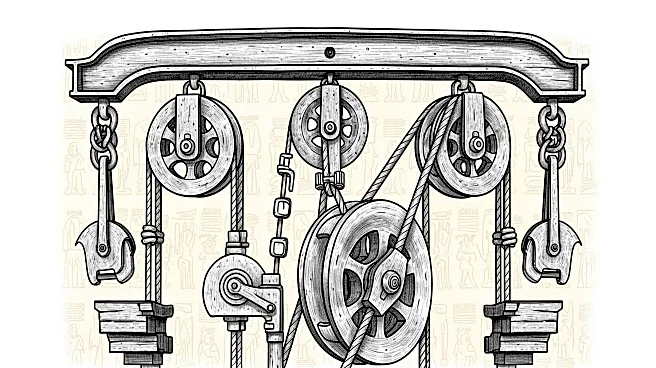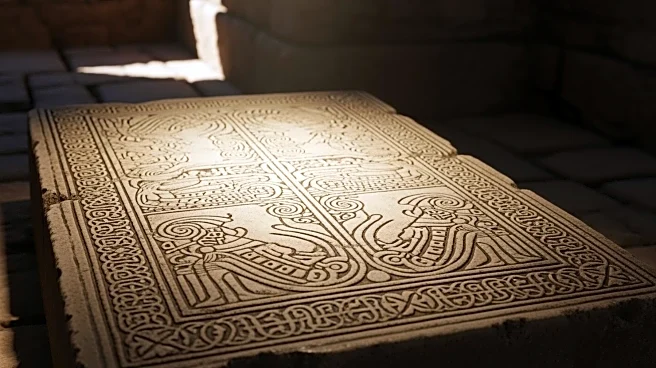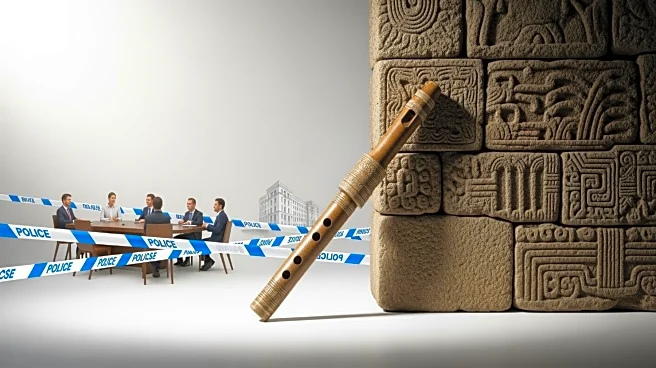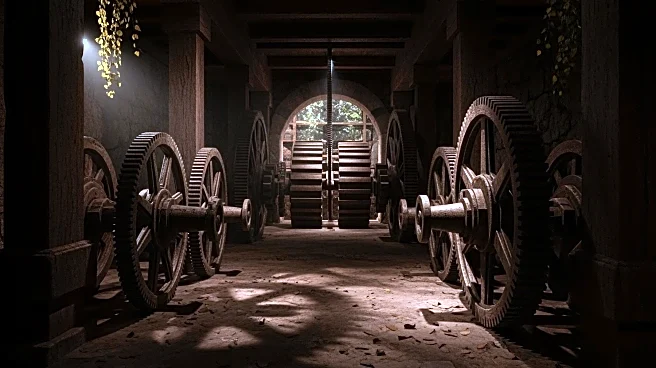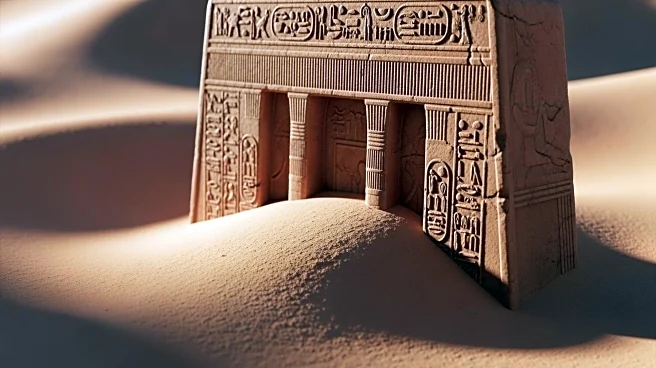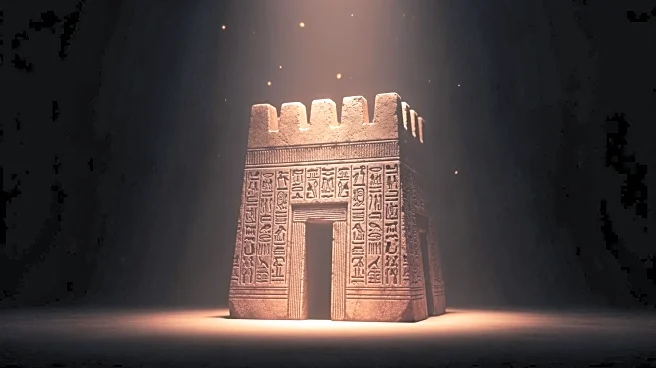What's Happening?
A recent study proposes that the Great Pyramid of Giza was constructed using an internal pulley-and-counterweight system, challenging traditional ramp theories. The study, published in npj Heritage Science,
suggests that the pyramid's passages and structural anomalies, such as floor scrapes and tapering block heights, support this innovative lifting theory. The author, Simon Scheuring, argues that granite counterweights and hidden shafts powered the transport of massive stones, offering a new perspective on the construction methods used by ancient Egyptians. The study highlights the King's Chamber's antechamber as a potential fulcrum in the pulley system, disputing its previous identification as a portcullis gate.
Why It's Important?
This study could significantly alter the understanding of ancient Egyptian engineering and construction techniques. If the pulley system theory is validated, it may provide insights into the technological capabilities of ancient civilizations, influencing archaeological research and historical narratives. The implications extend to the fields of engineering and architecture, potentially inspiring modern innovations based on ancient methods. Additionally, the study may prompt further exploration and excavation at the Great Pyramid site, potentially uncovering new historical artifacts and information.
What's Next?
The reception of Scheuring's theory will likely determine whether archaeologists pursue further investigations at the Great Pyramid site. If accepted, it could lead to new excavations aimed at finding evidence of the pulley system, particularly beneath the King's Chamber's antechamber. The study may also spark debates within the archaeological community, encouraging researchers to re-evaluate existing theories about pyramid construction. Future studies might focus on identifying similar systems in other ancient structures, broadening the scope of historical engineering research.
Beyond the Headlines
The study raises questions about the intersection of historical narratives and technological advancements. It challenges the notion that ancient civilizations relied solely on brute force and simple tools, suggesting a more sophisticated understanding of physics and mechanics. This could lead to a reevaluation of the cultural and intellectual achievements of ancient societies, influencing educational curricula and public perceptions of history.
